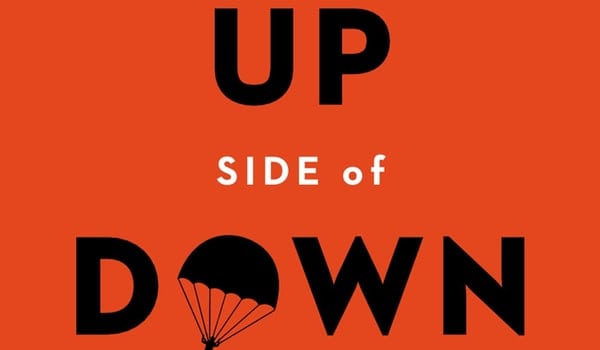
There are some foods that are quite healthy for you but taste equally as bad; those foods are analogous to failure. Failure has a bitter, uncomfortable taste to it and in The Up Side to Failure, Megan McArdle attempts to break down what, how, and why we fail – and why it’s good for us.
In the book McArdle constructs a landscape about failure in the United States. If someone fails at a startup we don’t ridicule them and take that as proof they don’t know how to run a business. Rather the thinking is that this person has been taught things the hard way (in the school of life) and they’re better for it. (Note: A prime example of this is our bankruptcy laws are also leaner than other countries, letting people bounce back more easily.) McArdle’s hypothesis is that as a society we are giving implicit consent to fail and failing the right way can be the best thing that’s ever happened to us.
One part of successful and regular failure is to think about your abilities as ones that grow rather than ones that are fixed. If you approach challenges that you can’t do yet but can figure out, that’s a growth mindset. If you think that your ability to do something is fixed, – say, that you’re not a “math person” or something similar – then that’s a fixed mindset.
It’s easy to get in the latter mindset because we only see other people’s “highlight reels.” We spot the successes of other people but rarely see the failures that led to that point. Meanwhile, our own visions include the behind the scenes documentary about how the set breaks, the hard drive crashes, and the budget explodes. To succeed is to expect failure as a first step.
The next step is to get comfortable enough with the rules of the game so that you see failure not as a shock that kills, but more like a zap that tells you not to go one way. In [The Five Elements of Effective Thinking] (http://www.amazon.com/gp/product/0691156662/ref=aslitl?ie=UTF8&camp=1789&creative=390957&creativeASIN=0691156662&linkCode=as2&tag=miksblo09-20&linkId=E42V22B52LCXTCNY), Dr. Edward Burger suggests you just assume you will have nine failures before succeeding on your tenth attempt. Reframing things in this way allows you to not view failure as the ultimate setback, but as a guide in the journey.
Once you accept failure as necessary, McArdle begins explaining that to successfully use failure there is a lot of noise you need to weed through to figure out why you really failed. She tells the story of New Coke taste tests, which were given for free in a mall parking lot. McArdle argues that people didn’t really like New Coke; what they liked was a small sip of something sweet for free. When we fail then, we need to be as objective as possible and ask why it happened.
Throughout the book McArdle shares stories about how hard failure can be. When you fail there is psychological weight you didn’t expect and a weeded garden of possible answers you need to dig through to find the fruits of the lesson. This quote from the beginning of the book illustrates one of the biggest takeaways in the book:
“There is a famous story of a rich old man being interviewed by a young striver, who asks him for the secret of his success. “Good judgment,” says the magnate. His eager young follower dutifully scribbles this down, then looks at him expectantly. “And how do you get good judgment?” “Experience!” says our terse tycoon. “And how do you get experience?” “Bad judgment!” “
If there’s one thing that always works, it’s that we need to keep digging.

